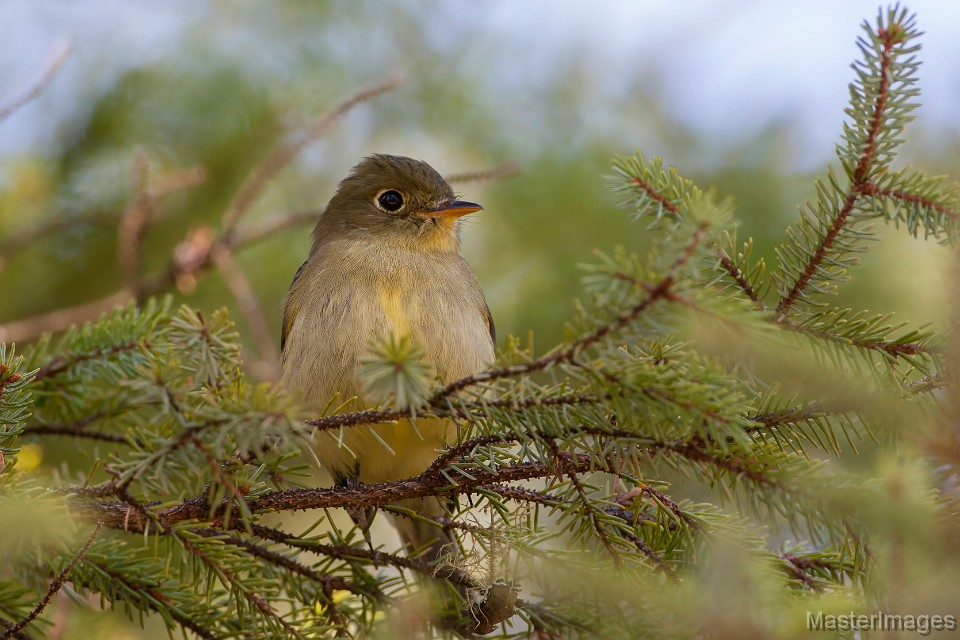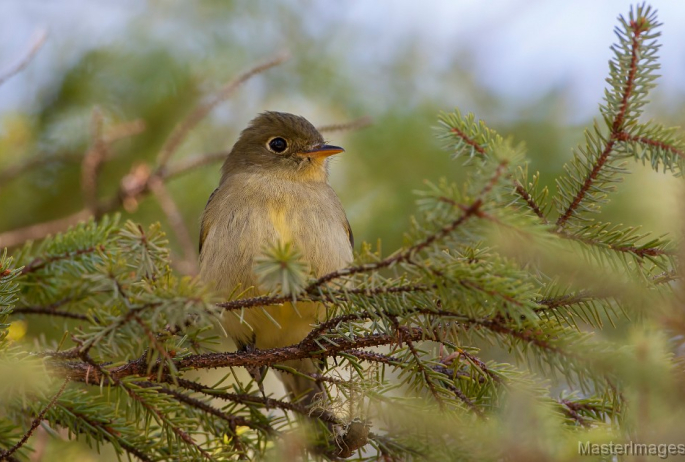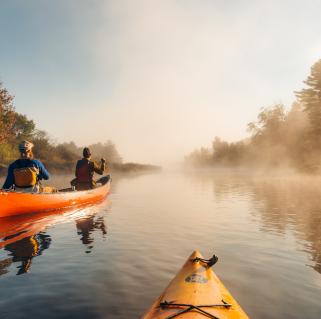Alan Belford
September 26, 2017
It’s that time of year
It sometimes takes a bit to get going, but the fall migration in the Adirondacks has been underway for a while, and it has been a lot of fun as of late. Our drippy weather the past few weeks has helped as well — the birds often actively feed down low on such days and are not being flushed south by strong north winds.
Walking along Lake Colby
A little over a week ago, I was taking Wren for an evening walk on the railroad tracks along Lake Colby when what was supposed to be a quick outing before we went swimming became a whole lot longer than originally planned. Songbirds jumped from seemingly everywhere along the path, feeding in the trees above our heads and working through the alder thickets for insects, and I found my feet planted in one place as I sifted through a flock that included Tennessee, Nashville, Magnolia, Bay-breasted, Blackpoll, Yellow-rumped, Black-throated, Green, Blackburnian, Pine, and Wilson’s warblers. There were also Red-eyed and Blue-headed vireos, and Least and Willow flycatchers, not to mention the Wood Duck, Common Loons, Bald Eagle, Osprey, and a dispersing Double-crested Cormorant on the lake. It was incredible.
The following day I found more warblers, as well as flyover Red Crossbills – they have been found across the region this summer. A few days later, our walk at Colby offered us 10 species of warblers – including four Bay-breasted Warblers sitting in one tree. Even more exciting than this were three Olive-sided Flycatchers, which hawked insects from the snags along the trail, competing with other flycatchers like Eastern Wood-Pewees, Eastern Phoebes, and Least Flycatchers. It was yet another longer-than-planned walk.

The following day, the Olive-sideds were gone – after all, the assemblage of species often changes daily during fall migration. In fact, the mix and diversity of migration also often changes throughout the day as the songbird flocks ebb and flow, moving through the trees and bushes, shaking them into life, and then moving inexplicably on and leaving us onlookers a bit breathless from their on-time presence. And it is this ephemeral and changing mix of color and pattern which makes the fall migration so captivating.
Birds in the yard
While I am always easily distracted from my work, the issue seems to be doubly bad during the migration, when a simple walk is lengthened by constantly discovering something new, or when my breakfast is regularly interrupted by the chips and chatter of birds in the yard which are begging (no, they are begging me) to be seen – and if I’m lucky – photographed.
The only solution for this conundrum is to indulge it – migration is always over well before I’m ready for it to be, and I’m out with Wren a couple of times a day anyway, even if I’m not working in the field. And so each walk we take is an opportunity to find something of note, to see a different species, or to simply enjoy the life such flocks of birds imbue into the shrubs and other vegetation. And so, as I sit inside working on my writing, I have my ears and eyes open to what is going on outside of the window – in this way I’ve seen 16 species of warblers in my yard in the past week and a half, including Wilson’s, Cape May, Bay-breasted, and Tennessee. At least I can tell myself that looking at birds in my yard is part of my job.
This not only helps explain my lack of productivity at this time of year, it also demonstrates that the migration can be viewed from anywhere – whether on the trail, out walking the dog, or at home attempting in vain to work while a flock of feathered distraction arrives in the yard. But that’s what makes it so great.
And songbirds aren’t the only birds of interest passing through the region right now. Just yesterday, while walking Wren along Lake Colby, I not only found another flock of birds that included a suite of warblers, Scarlet Tanager, and Rose-breasted Grosbeak, I also spotted a Black Tern fishing over the back bay of the lake. I watched it for about 45 minutes as I waited for a friend to join me. Once again, the potential for that sort of unusual find continues to draw me outside as often as I can during the migration. After all, every day, every walk, every morning, every flock of birds is loaded with unknown promise beckoning to be discovered.
And so this morning was like so many mornings during this time of year – while letting Wren out to start the day I found myself standing outside in my pajamas, in the morning mist and drizzle, exploring the latest wave of birds while my oatmeal sat getting cold. And I wouldn’t have it any other way.
Fall migration across the Adirondacks and North Country is amazing! Don’t miss it! Plan your trip by checking out our outdoor recreation, lodging, and dining pages.

Packages and Promotions
Valid Jan. 21
- Jan. 21
Valid Jan. 21
- Jan. 21
Stay and Dine
Voco Saranac Lake
Receive a 50 dollar credit per stay to use in our Boathouse Saranac Lake Pub. Enjoy an exceptional dining experience with unparalleled views great...
Valid May. 1
- Oct. 31
Valid Dec. 6
- Nov. 1
Zip and Whip Expedition
Farmhouse UTVs
Experience Outdoors and Farmhouse UTVs have teamed up to bring your family and friends the Adirondack adventure you've been waiting for....
Valid Dec. 1
- Dec. 1
Valid Dec. 1
- Dec. 1
Linger Longer in Saranac Lake
Best Western Saranac Lake
Linger Longer in Saranac Lake at our supremely located property, Best Western Saranac Lake. Stay 2 nights or more and get 15% off!
Valid Jun. 20
- Sep. 7
Valid Mar. 12
- Jun. 30
Guided Nature Immersions - 10% off for Pre-Season Registration
Adirondack Riverwalking & Forest Bathing
Picture it now...you are wading the Ausable River on a warm summer day, feel the cool water against you, hear the sounds of the birds and the...
Valid May. 1
- Nov. 2
Valid Apr. 1
- May. 1
Forest Bathing Guided Experience - 10% off for pre-season registration
Adirondack Riverwalking & Forest Bathing
Guided forest sensory immersion walk for all. Sign up early for 10% off!

























































































































































































































































































































































